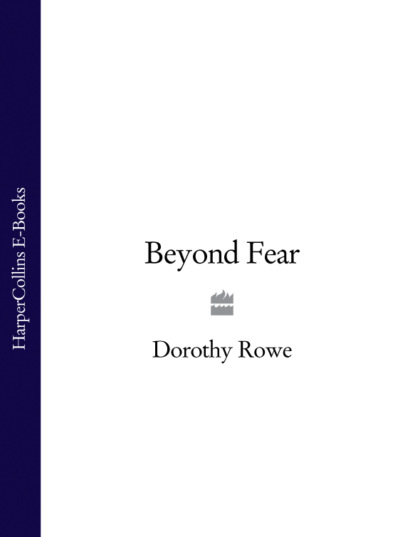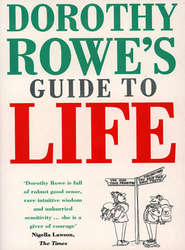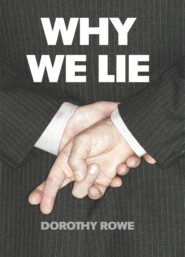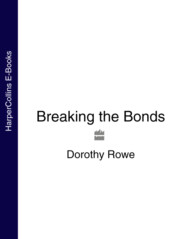По всем вопросам обращайтесь на: info@litportal.ru
(©) 2003-2024.
✖
Beyond Fear
Автор
Год написания книги
2018
Настройки чтения
Размер шрифта
Высота строк
Поля
Children have the same right as adults to respect for their human dignity and physical integrity and to equal protection under the law, in the home and everywhere else. There is no room for compromise, for attempting to define ‘acceptable’ smacking. This has been confirmed by United Nations and Council of Europe human rights monitoring mechanisms, and by the Westminster Parliamentary Joint Committee on Human Rights.
The UK has been told repeatedly since 1995 that to comply with its human rights obligations, the reasonable punishment defence must be removed completely in all four countries of the UK.
(#litres_trial_promo)
The strongest opposition to any change in the law comes from some of the Christian churches whose members believe in following the Old Testament injunction, ‘Spare the rod and spoil the child’. Adults who beat children protect themselves with a set of self-serving lies, typically, ‘This hurts me more than it hurts you’, ‘It’s for your own good’, and ‘I don’t beat my children, I just give them a tap’.
Yet this is not how young children experience a ‘tap’. In a study conducted by the National Children’s Bureau and Save the Children seventy-six five- to seven-year-olds were asked their definition of a smack. ‘The message from children is that a smack is a hit: on 43 occasions children described a smack as a hit, a hard hit, or a very hard hit.’ When a child described a smack as a hard hit her questioner asked, ‘Can it be a soft hit?’ The child replied firmly, ‘No’. A seven-year-old girl observed, ‘A smack is parents trying to hit you, but instead of calling it a hit they call it a smack.’ When asked why children usually get smacked a five-year-old girl said, ‘When I’m very naughty my mum smacks me’. Her questioner asked, ‘What is being very naughty?’ The little girl replied, ‘When you hit people a lot.’ Apparently her questioner refrained from asking whether her mother was being naughty when she hit her but no doubt the little girl had considered this question.
When asked what it felt like to be smacked, the children were clear that it was very unpleasant. A six-year-old boy said, ‘It feels like someone’s punched you or kicked you.’ A seven-year-old girl said, ‘It hurts and it’s painful inside - it’s like breaking your bones.’ Another seven-year-old girl said, ‘You feel like you don’t like your parents anymore.’ When asked how children feel after they have been smacked, only one child said that he learnt from his mistake.
(#litres_trial_promo)
The knowledge that they are being harmed by the person who should be looking after them creates a conflict that children have to resolve in some way. Some children bravely face the truth that they have parents who are not the perfect parents they would wish for, but others choose to lie to themselves and to deny their own pain and fear. They tell themselves that they are bad and deserve to be punished, and they deny that the physical punishment actually hurts. The first choice destroys the child’s belief that she (and it is often a she) is valuable and acceptable, while the second destroys the child’s capacity for empathy. Boys who are repeatedly beaten tell themselves that they feel nothing, and they are rewarded for this lie by being admired by their peers for being tough. Seeing yourself as being wicked and deserving punishment, and destroying your capacity for empathy, has many bad outcomes. The research carried out by Murray Straus at the Family Research Laboratory, University of New Hampshire, showed that, regardless of race, socio-economic status, the gender of the child and the quality of the support given to the child by the mother, the tendency to antisocial behaviour increases after corporal punishment. Straus also found links between corporal punishment in childhood and adult violence, masochistic sex, depression and alcohol abuse.
(#litres_trial_promo)
A study which revealed how children who are physically abused lose their capacity for empathy took the form of a survey of 11,600 adults in the USA, and found that 74 per cent of those who had been punched, kicked or choked by their parents did not consider this type of behaviour abusive.
(#litres_trial_promo) In Britain at least one child dies every week from injuries inflicted by an adult, usually a parent or step-parent. Yet in Sweden, where all forms of corporal punishment have been illegal for twenty years, only four children have died at the hands of an adult over that time and, of these four, only one died at the hands of a parent. A study published in 1999 on the effects of the ban on smacking in Sweden showed that the number of reports of assaults on children increased, with the result that any child at risk of serious injury was identified early, thus preventing anything like the tragic cases found all too often in Britain where, even though healthcare workers and neighbours often knew that a child was being savagely beaten, no one acted to prevent the child’s brutal murder. In Britain young people’s drug use and alcohol intake have increased over the past twenty years, while in Sweden these have decreased.
(#litres_trial_promo)
In Britain surveys show that many more people want to ban fox-hunting than want to ban parents smacking their children. It is often said that the British prefer animals to children, but harsh, uncaring attitudes to children are found in every society. Those who want to retain the right of parents to inflict physical punishments argue that a ban would turn the parents into criminals. The Swedish government introduced many measures concerned with improving the skills of the parents and with providing good professional support.
Physical punishment gives parents no cause to think about their actions. A slap can be inflicted instantly. Over recent years psychiatrists and the pharmaceutical industry have provided parents with another method of controlling their children which requires no thought on the part of the parents except to remember when to administer a pill.
Kirsty, a social worker, told me how she had gone to visit her younger brother Tim, his wife Cora and their three-year-old son Peter. Peter was being his usual rumbustious self, rushing around, climbing on chairs and tables, enjoying rough games with his father, noisily arguing with his aunt over a jigsaw. The only time he was quiet was when he sat, transfixed, in front of the television watching his favourite programme, Bob the Builder.
As Kirsty watched her strong, healthy, active nephew, she remembered Tim at that age, behaving just like Peter, and wearing their parents out with his antics. She remembered too how surprised she had been when her grandmother had talked about Kirsty’s father being the same at that age. Kirsty knew her father only as a very staid accountant, just like Tim had become. Over dinner, when Peter had finally gone to bed, Kirsty wanted to reminisce about the generations of boys in her family who had been such lively three-year-olds, but she was forestalled by Cora saying, ‘There’s something we want to ask you,’ and Tim enquiring, ‘Do you think Peter’s got ADHD?’
ADHD, or Attention Deficit Hyperactivity Disorder, is currently a fashionable syndrome. Physical illnesses do not have fashions, only epidemics when some virus or bacillus is on the loose, or when some deleterious environmental conditions prevail. Physical illnesses have some identifiable physical basis, but mental disorders do not. Some psychiatrists claim that a brain dysfunction underlies ADHD, but no such dysfunction has been found.
In the early 1960s, before ADHD was invented, I was working in Sydney, Australia, as an educational psychologist with special responsibility for children with emotional problems. Part of my work was to advise teachers about pupils whose behaviour was causing them concern. The kind of children who were most frequently referred to me were seven- or eight-year-old boys who would not or could not settle into the classroom routine. When I examined these boys and their family background I found that they fell into two groups.
The first and largest group was those boys whom school did not suit. Many such children have good performance abilities - that is, they have good hand-eye co-ordination, they can think in spatial terms, and can analyse and construct patterns but their verbal skills - either through inborn limitations or early education - have not developed to the same degree as their performance skills. However, schools use and value verbal skills much more than performance skills, and thus many boys come to feel alienated from the educational process. Consequently, if they are bored in class, they seek to entertain themselves, and if they feel rejected and undervalued they seek to protect and to assert themselves by getting attention through being naughty. If you cannot be famous you might as well be notorious.
To a casual observer this first group of boys was no different from the second group, who were also inattentive, restless and inclined to get into mischief. However, these boys were not bored and seeking attention. They were frightened, and their fear made them unable to concentrate and to keep still. The family background of these boys was one which created the child’s fears. Some of these families were deeply unhappy. The mother may have been depressed and threatening suicide, or the father may have been a brutal tyrant. Some were migrants and the parents were still suffering the effects of their experiences in the Second World War. Often the adults were unable to adapt to a strange country. One young lad told me how at home his grandmother would punish him if he spoke English, yet he now thought in English and wanted to be accepted as an ordinary Australian boy.
It was not a happy time for any of these boys, but in one way they were lucky. They could not be diagnosed as having ADHD and be medicated with Ritalin.
(#litres_trial_promo)
Ritalin and Equasym are the brand names of two drugs based on the generic drug methylphenidate hydrochloride, used in the treatment of ADHD. Both have been approved by the UK National Institute for Clinical Excellence (NICE), which advises that the drugs should not be given to children under six and should be used only as part of a comprehensive treatment programme. In the USA several million children have been prescribed these drugs, including large numbers of children under six, even toddlers. Ritalin is so well known in the USA that my word-processing program includes it in its dictionary. In the USA and Australia it is known as ‘kiddie cocaine’. A survey of child psychiatrists and paediatricians across Australia showed that 80 per cent have prescribed stimulant drugs like Ritalin for children. In 1999 this type of drug was prescribed for 5,819 children under six, of whom 67 were aged two and 715 aged three.
(#litres_trial_promo) In the UK the number of children prescribed these drugs is now in the thousands and is doubling each year. The literature supplied by the pharmaceutical companies which make the drugs speaks of ‘psycho-stimulant therapy’ but does not explain why children who are hyperactive are given a drug that is known for its capacity to stimulate adults.
Drugs that are prescribed for babies and children both in medicine and psychiatry are not tested on babies and children. Drugs are tested only on adults. All doctors can do is extrapolate from the recommended adult dose. Babies and children have died from some such extrapolations.
(#litres_trial_promo) Recently the National Institute of Mental Health in the USA set up the Research Units on Pediatric Pharmacology (RUPP). The first report issued by one of these was that from the Johns Hopkins Medical Children’s Center, where a large, randomised double-blind study showed that the drug fluvoxamine was an effective treatment for anxiety in children. This drug is a selective serotonin reuptake inhibitor (SSRI), which causes the neurotransmitter serotonin to accumulate in the synapses in the brain. Supplies of the drug were provided by Solvay Pharmaceuticals, who also gave research support (i.e., money) to the RUPP centres. The trial ran for only eight weeks, which does not make it a measure of the long-term effects of such a drug on the developing brains of children.
(#litres_trial_promo)
Methylphenidate hydrochloride is a core member of the group of drugs called amphetamines, whose street name is ‘speed’. It is not understood why amphetamines cause adults to feel energetic and excited while the same drug slows children down. Obviously the drug works differently on a developing brain than it does on a mature brain. What has been known for some decades now is that amphetamines are addictive. Indeed, amphetamines are so addictive, toxic and dangerous that adults cannot take them legally without prescription anywhere in the world.
Pharmaceutical companies dislike the word ‘addictive’. In the prescribing information given by Medeva for their drug Equasym it says, ‘Chronic use can lead to tolerance and dependence with abnormal behaviour.’ ‘Chronic use’ is not defined. It could be six years or six months. Such companies do not like to reveal the adverse effects of any of their drugs and try to meet the legal requirements for disclosure while saying as little as possible. Adverse effects are minimized by calling them ‘side effects’ and by listing as few of them as possible. Medeva list for Equasym ‘nervousness, insomnia, decreased appetite, headache, drowsiness, dizziness, dyskinesia, abdominal pain, nausea, vomiting, dry mouth, tachycardia, palpitations, arrhythmias, changes in blood pressure and heart rate, rash, pruritis, urticaria, fever, arthralgia, scalp hair loss’.
Peter Breggin, the American psychiatrist who has devoted his life to researching the deleterious effects of the drugs used in psychiatry, pointed out that the list of behaviours given as symptoms of ADHD in the Diagnostic and Statistical Manual (DSM-IV) focuses on behaviours which interfere with an orderly, quiet, controlled classroom. ‘The first criterion under hyperactivity is “often fidgets with hands or feet or squirms in seat”. The first criterion given under impulsivity is “often blurts out answers before questions have been completed” and the second is “often has difficulty in waiting turn”. None of the ADHD criteria is relevant to how the child feels. Mental and emotional symptoms, such as anxiety or depression, are not included.’ In his book Talking Back to Ritalin
(#litres_trial_promo) Peter Breggin ‘catalogued dozens of “causes” for ADHD-like behaviour. Most commonly it is the expression of the normal child who is bored, frustrated, angry, or emotionally injured, undisciplined, lonely, too far behind in class, too far ahead of the class, or otherwise in need of special attention that is not being provided. More rarely, the child may be suffering from a genuine physical disorder, such as a head injury or thyroid disorder, that requires special medical attention rather than stimulant medication.’
(#litres_trial_promo)
In his book Naughty Boys consultant child psychiatrist Sami Timimi told how he would ask his colleagues ‘to explain to me what diagnoses like attention deficit hyperactivity disorder (ADHD), conduct disorder and Asperger’s syndrome were, what was going on physically in these children, and how they “knew” which child had a conduct disorder caused by family problems as opposed to ADHD caused by an immature frontal lobe (in other words a physical problem in the development of the brain). They couldn’t explain this to me and didn’t know how to differentiate physical from emotional or other environmental causes. The best they could come up with was “it must be so”. Shockingly, I realized that the whole profession is built on subjective opinion masquerading as fact.’
(#litres_trial_promo) Writing about the psychiatric conferences supported by the drug companies, he said, ‘All too often I leave these mainstream events feeling like I had attended a cult convention, not a scientific conference, so bad has the lack of democratic debate or interest in non-drug-industry-driven perspectives become.’
(#litres_trial_promo) Sami Timimi was born in Iraq and came to England when he was fourteen. He could see very clearly how different his upbringing was from that of his English fellow students. Later, as a child psychiatrist, he could relate this understanding to the problem of ADHD, which is a problem only in countries which have a western culture. Outside these places it is unknown. Of course in these places there are some naughty boys, but haven’t there always been? What is it that happens to boys particularly in western societies that does not happen to boys elsewhere?
Sami Timimi pointed out that, ‘Early in the twenty-first century we in the West are living in the bizarre paradox of Western governments spending billions every year to fight a war on drugs with the right hand whilst the left hand hands out millions of prescriptions for cocaine-like stimulants to its children.’
(#litres_trial_promo) Peter Breggin explained the long-term significance of these ‘therapeutic’ effects in an article which he called ‘The New Generation Gap: Today’s Kids Suffer Legal Drug Abuse’. He wrote:
We are the first adults to handle the generation gap through the wholesale drugging of our children. We may be guaranteeing that future generations will be relatively devoid of people who think critically, raise painful questions, generate productive conflicts, or lead us to new spiritual and political insights. Growing up on psychiatric drugs, millions of children are developing little sense of their own personal responsibility. Instead of discovering their own capacity to improve their lives and transform the world for the better, they are being taught they are brain-defective - and require lifetime treatment with psychiatric drugs.
(#litres_trial_promo)
When I was a child my family gave me to understand that there was something intrinsically wrong with me as a person because I had a chronic lung disease, bronchiectasis. This so undermined my self-confidence that it is only in recent years that I have been able to talk to people, other than the doctors I consulted, about the effects this disease had on my life. How much worse it must be to be told that you have a defective brain, that the way you behave is unacceptable, that you are incapable of controlling your behaviour, and that only by depending on a drug will you be in any way acceptable to your family and to society. A number of studies looking at what children on Ritalin thought of the drug confirmed this. One child said, ‘I think it is a kind of sickness, because it, it kind of takes over, I know it takes over my body… it’s like you don’t have that much control… I kind of feel weird, because you need a pill to control yourself.’
(#litres_trial_promo)
The child psychiatrist Sandra Scott, writing in New Scientist, said, ‘Contrary to what some parents presume, drugs do not treat bad behaviour directly. Using drugs to treat conduct disorder exposes the child to unnecessary side effects and makes it harder to apply more effective methods such as cognitive behavioural therapy - getting the child to understand why he behaves in the way he does - or therapy involving the child’s family.’
(#litres_trial_promo) The ‘comprehensive treatment programme’ recommended by NICE includes both cognitive behavioural therapy and family therapy.
Another consultant psychiatrist, Felicity, told me how, while she did prescribe Ritalin, she was well aware that many of the mothers of children diagnosed with ADHD had little idea how to use praise in getting a child to behave well. These women relied solely on criticism and punishment, often physical punishment. The multi-disciplinary team of which Felicity was a member used group methods to help the mothers learn how to praise their children. One sticking point was often the mother’s inability to see that praise which is followed immediately by criticism is in effect not praise at all. There is no point in saying to a child, ‘You behaved really well then,’ if this is immediately followed by, ‘Why didn’t you behave like that yesterday?’
However, using praise effectively to encourage a child to behave well is not simple. Over the past century much of the research carried out by psychologists has been devoted to proving the obvious, but then the obvious is only what people are prepared to see. For many people what was obvious was that children will learn to behave correctly if all their errors are punished. This ‘obvious’ fact psychologists have shown not to be true. We all learn best when our correct behaviour, or even just-approaching-correct behaviour, is rewarded and our errors ignored. This has been shown to be the case not just with our own species but with a wide range of other species.
The idea that rewards, not punishments, should have primacy was gradually, though not completely, taken up by teachers and education specialists. However, knowing what response to reward can be tricky. What nearly right answers should be rewarded? Is 6 + 4 = 11 less wrong than 6 + 4 = 13, and thus deserving some modest praise?
The question of what behaviour to reward is even more difficult when it comes to more general achievements and social relationships. A continuing problem for those of us who try to help people change and thus lead happier lives is that a good but relatively complex idea, if taken up enthusiastically but uncritically by people seeking fame and fortune, becomes oversimplified and is applied lavishly without any careful thought. The Freudian psychoanalytic idea that sexual repression can lead in complex ways to neurotic misery, when taken up enthusiastically and uncritically by advocates of free love, became the source of fame and wealth for a few and the source of great misery for many, with an immense increase in the number of people suffering from sexually transmitted diseases. Similarly the idea that children should be praised for right responses was linked to the idea that adults should treat children with respect, and together they were turned into one oversimplified notion called ‘self-esteem’. A person was deemed to have, or not to have, self-esteem, in the same way that a person might have, or not have, a car. Or a person was deemed to have high or low self-esteem, in the same way that a car might have a nearly full or nearly empty petrol tank. What followed was competition between therapists in a scramble to win fame and fortune out of ‘self-esteem’ and its spin-offs, like ‘the inner child’. In the USA, where self-confidence is usually ranked as the highest virtue (being sure that God is actively engaged in supervising your welfare is a mark of supreme self-confidence), parents began praising their children as enthusiastically and uncritically as they used to beat them.
Fashions have their day. Now some psychologists in the USA are saying that too much praise lowers children’s motivation and can turn them into ‘praise junkies’. Nikki Sheehan, writing in the parents section of the Guardian, said:
Dr Ron Taffel, author of Nurturing Good Children Now, described watching children sledding in Central Park. ‘Their parents were screaming, “Great job! Phenomenal sledding! That’s the best I’ve ever seen,’ “said Taffel in the New York Times. As he points out, the children were being praised for obeying the laws of gravity. ‘It cheapens the praise, and children may become dependent.’
Lilian Katz, from the University of Illinois, claims that saying, ‘good painting’ will keep children at task while you are watching, but, once adult attention is withdrawn, many lose interest in the task. She believes that demotivation may occur as the child’s focus moves from enjoyment of the task in hand to the search for more praise: the more we reward, the more likely the child is to lose intrinsic interest in whatever they were doing to get the reward…









